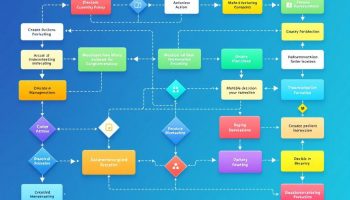
Quality Control Measures: Enhancing Operational Excellence
Quality control measures provide a systematic approach to monitor and evaluate processes, products, and services across your business operations. These activities significantly boost operational excellence by preventing problems before they occur, reducing defects, and ensuring consistent adherence to performance standards.
Key Takeaways:
- Quality control measures help identify process deviations early, saving substantial costs and preserving organizational reputation
- Implementing robust quality control systems can lead to up to a 9% increase in sales and a 26% increase in profitability
- Effective quality control requires clear quality standards, team training, and continuous improvement principles
- Statistical Process Control (SPC) and advanced analytics are fundamental tools for maintaining consistent quality
- Quality control is a strategic approach that transforms quality from a compliance requirement to a competitive advantage
Early detection of issues through structured quality control allows you to address problems at their source, preventing costly corrections downstream. Companies that prioritize quality management typically experience higher customer satisfaction rates and improved market perception.
The financial benefits of quality control extend beyond cost savings. Research shows proper implementation leads to noticeable revenue growth and profit improvements. This occurs because consistent quality reduces waste, minimizes rework, and builds customer loyalty.
Setting specific, measurable standards forms the foundation of effective quality control. Your team needs clear training on these standards and the tools to apply continuous improvement methods. Regular audits help maintain these standards over time.
Modern quality control relies on statistical analysis and data-driven approaches. SPC techniques allow you to track production variables and identify trends that might indicate potential issues before they affect final products.
Quality control has evolved from simple inspection to becoming a comprehensive business strategy. Organizations that integrate quality principles throughout their operations gain significant competitive advantages in today’s market.
For manufacturing operations, implementing ISO 9001 quality management standards provides a structured framework that can be customized to your specific production requirements, ensuring consistency across all product lines.
“Quality control measures are the backbone of operational excellence, transforming compliance into a competitive advantage by enabling businesses to identify deviations early and enhance their profitability. By embracing robust quality systems, organizations not only safeguard their reputations but also drive significant sales growth and continuous improvement across all domains.”
Understanding the Foundations of Quality Control
Quality control measures meaning encompasses the systematic activities implemented to monitor and evaluate the quality of processes, products, or services. Walter A. Shewhart’s pioneering work in the 1920s established control charts as essential tools for maintaining consistency and reducing variability in manufacturing. His statistical methods laid groundwork for modern quality control approaches that now permeate all business sectors.
The core objective of quality control measures is to ensure products consistently meet specifications while minimizing defects. This approach focuses on preventing problems rather than simply detecting them after production. Quality control measures enable you to identify process deviations early, saving substantial costs and preserving your reputation.
Historical Evolution of Quality Control
The concept of quality control has evolved significantly since its industrial origins. Early statistical quality control methods focused primarily on inspection and sampling techniques. Today’s quality control measures integrate sophisticated statistical analysis with technological innovations to create comprehensive management systems.
Quality control measures include several key components that work together:
- Process monitoring through statistical methods
- Product testing and inspection protocols
- Documentation of procedures and outcomes
- Corrective action implementation
- Continuous improvement mechanisms
Implementing proper quality control measures delivers measurable benefits to your organization. You’ll experience fewer defects, reduced waste, and improved customer satisfaction. According to industry statistics, businesses with robust quality control systems see up to a 9% increase in sales and a 26% increase in profitability.
Statistical Process Control (SPC) remains fundamental to quality control measures. This methodology uses statistical tools to monitor process outputs, making it possible to distinguish between common cause variation (inherent to the process) and special cause variation (requiring intervention). By implementing project assurance techniques, you’ll maintain consistent quality throughout your operations.
The effectiveness of your quality control measures depends on proper implementation. Establishing clear quality standards, training team members, and developing appropriate measurement systems form the foundation. When combined with continuous improvement principles, these measures create a powerful framework for operational excellence.
Remember that quality control measures are not just about meeting minimum standards—they’re about striving for excellence in every aspect of your operations. By understanding these foundational concepts, you can develop quality control systems that drive competitive advantage and long-term success.
Businesses with robust quality control systems see up to a 9% increase in sales and a 26% increase in profitability.
hbr.org
Core Quality Control Methodologies
Quality control measures meaning encompasses systematic approaches to ensure products and services meet specified standards consistently. You’ll find several methodologies that form the backbone of effective quality control in modern business operations.
Six Sigma stands as a data-driven methodology targeting just 3.4 defects per million opportunities. This rigorous approach utilizes the DMAIC cycle (Define, Measure, Analyze, Improve, Control) to identify and eliminate defects while reducing process variation. When properly implemented, Six Sigma can transform your operational performance by creating predictable, standardized outcomes through quality control measures that address root causes rather than symptoms.
Total Quality Management (TQM) takes a broader, customer-focused approach by embedding quality control measures meaning throughout your organization. This methodology emphasizes that quality isn’t just the responsibility of a specialized department but requires everyone’s participation. TQM aims to integrate quality consciousness into your company culture, driving both customer satisfaction and operational excellence.
Lean Manufacturing and Continuous Improvement
Lean Manufacturing principles focus on eliminating waste in all its forms while maintaining strict quality control measures. By removing non-value-adding activities, you can create more efficient processes that deliver consistent quality with fewer resources. Companies implementing Lean have experienced notable financial impacts, including 9% increases in sales and 26% improvements in profitability.
Kaizen, or continuous incremental improvement, complements these methodologies by promoting ongoing refinement of quality control measures meaning in practice. This Japanese philosophy encourages your team to make small, regular improvements rather than implementing dramatic changes. The cumulative effect of these incremental enhancements creates sustainable quality improvement and builds a problem-solving culture.
Essential quality control tools that support these methodologies include:
- Control charts for monitoring process stability
- Pareto analysis for prioritizing quality issues
- Cause-and-effect diagrams for root cause identification
- Statistical process monitoring for detecting variations
- Failure mode and effects analysis (FMEA) for preventing defects
Quality control measures must evolve with technological advancement. Modern approaches integrate Quality Management Software (QMS) with traditional techniques, creating comprehensive systems that can track, analyze, and predict quality issues before they impact customers. The right combination of methodologies tailored to your specific operations can transform quality from a cost center to a strategic advantage driving business growth.

Quality Assurance Techniques and Tools
Statistical Process Control (SPC) forms the backbone of effective quality control measures meaning you can detect process variations before they lead to defects. When implemented correctly, SPC enables your organization to reduce defect rates by up to 32% through systematic monitoring of production processes. You’ll need to establish control limits that define acceptable performance ranges and track metrics continuously to maintain optimal quality levels.
Material and performance testing protocols are essential quality control measures meaning your products meet specifications before reaching customers. These protocols should include:
- Raw material inspection upon receipt
- In-process testing at critical production stages
- Final product verification against specifications
- Accelerated life testing to predict long-term performance
- Stress testing under extreme conditions
Comprehensive failure testing strategies help you identify potential weaknesses in your products before customers experience issues. Effective issue management requires documenting all failures, analyzing root causes, and implementing preventive measures to avoid recurrence.
Quality Management Software Integration
Quality Management Software (QMS) integration streamlines your quality control processes by centralizing data collection, analysis, and reporting. Modern QMS solutions offer:
| Feature | Benefit | Impact on Quality Control |
|---|---|---|
| Document Control | Ensures use of current procedures | Reduces errors from outdated methods |
| Audit Management | Tracks compliance with standards | Identifies improvement opportunities |
| Corrective Action | Facilitates problem resolution | Prevents recurrence of issues |
| Supplier Management | Monitors vendor performance | Improves incoming material quality |
| Real-time Analytics | Provides instant process visibility | Enables faster response to deviations |
Advanced analytics and automation technologies enhance your quality control measures meaning you can detect subtle patterns and predict potential quality issues before they occur. Root cause analysis becomes more precise with AI-powered tools that can process vast amounts of production data to identify underlying factors affecting quality.
ISO 9001 certification demonstrates your commitment to quality control measures meaning customers can trust your products or services. The structured approach required for certification typically results in significant operational improvements, including better documentation, clearer processes, and enhanced customer focus.
By implementing these quality control measures meaning full integration of statistical methods, testing protocols, and technology solutions, you’ll achieve more consistent product quality while reducing costs associated with defects, rework, and customer complaints. Production quality control methods continue to evolve, with the most successful organizations treating quality as a strategic advantage rather than merely a compliance requirement.

Financial and Operational Impact of Quality Management
When you implement effective quality control measures, meaning systematic processes to ensure products and services consistently meet predetermined standards, your business can experience significant financial advantages. The Cost of Poor Quality (COPQ) typically ranges from 5-30% of sales revenue—a substantial amount that directly impacts your bottom line. By reducing defects and rework, you’ll see immediate cost savings while simultaneously improving customer satisfaction and retention.
Quantifying the Financial Benefits
Quality control measures create measurable financial improvements across your organization:
- Decreased warranty claims and customer returns (typically 20-35% reduction)
- Reduced scrap and rework costs (saving 15-25% of production expenses)
- Lower inspection and testing costs through process optimization
- Increased productivity and throughput due to fewer interruptions
- Enhanced brand reputation leading to premium pricing opportunities
Companies with robust quality control systems have demonstrated a 9% increase in sales and a 26% increase in profitability compared to industry peers with less developed quality programs. These statistics highlight why project assurance through quality control is essential for sustainable business growth.
Your operational performance will also transform when quality metrics become integrated across all organizational levels. By linking performance evaluations to quality outcomes, you establish accountability throughout your company. This approach ensures everyone understands that quality isn’t just a department’s responsibility—it’s a core business function requiring continuous improvement and vigilance.
Customer satisfaction serves as perhaps the most critical success metric in quality control measures; it directly correlates with loyalty and revenue growth. When you consistently deliver high-quality products and services, customer complaints decrease while positive reviews and referrals increase. The resulting customer retention improvements can boost profitability by 25-95% according to industry studies.
The operational benefits extend to inventory management as well. With predictable quality levels, you can reduce safety stock requirements, minimize expedited shipping costs, and optimize production scheduling. These improvements create a more agile operation capable of responding quickly to market changes while maintaining quality control measures across the supply chain.

Technology-Driven Quality Control Future
The evolution of quality control measures meaning has expanded significantly with technological advancements. You’ll find modern quality management increasingly powered by sophisticated software platforms that streamline inspection processes and enhance data accuracy.
Leading solutions like Axonator, SafetyCulture, and MachineMetrics have transformed traditional quality control into dynamic, real-time systems. These platforms allow you to monitor production metrics instantly rather than waiting for end-of-line inspections, fundamentally changing how quality issues are detected and addressed.
Artificial Intelligence has revolutionized quality control measures by introducing predictive capabilities. Instead of reacting to defects, AI algorithms can analyze patterns to forecast potential quality issues before they occur. This proactive approach to quality control measures meaning creates significant cost savings by preventing defects rather than correcting them.
Automation and Cross-Functional Quality Management
Automation technologies have substantially reduced human error in quality processes. You can implement automated inspection systems that use computer vision and sensor technologies to detect microscopic defects with greater consistency than manual inspections. These systems provide a consistent application of quality control measures meaning across your production environment.
The collaborative approach to quality management has also evolved. Modern organizations distribute quality responsibilities across departments rather than isolating them within a dedicated quality team. This cross-functional ownership model ensures quality control measures permeate every aspect of your operations.
Leadership commitment remains crucial in technology-driven quality systems. You must champion quality initiatives from the top down, establishing a culture where quality control measures meaning is understood as everyone’s responsibility. Without executive support, even the most sophisticated technology will fail to deliver sustained quality improvements.
Data analytics capabilities in modern quality systems allow you to track quality metrics with unprecedented precision. You can identify correlations between process variables and quality outcomes, enabling targeted improvements based on data rather than assumptions. This systematic approach to issue management creates a feedback loop for continuous improvement.
The integration of quality control measures with other business systems creates a unified technology ecosystem. When your quality data connects with ERP, CRM, and supply chain systems, you gain visibility into how quality impacts every aspect of business performance. This holistic view transforms quality control from a cost center to a strategic advantage driving customer satisfaction and profitability.
Implementing and Maximizing Quality Control Strategies
Successful quality control measures meaning extends beyond mere inspection to become an integral part of your business operations. You need a systematic approach to implement these measures effectively across your organization.
Creating a Roadmap for Implementation
To implement robust quality control measures, you should establish a clear path forward:
- Conduct a thorough assessment of current processes to identify gaps
- Define measurable quality standards aligned with industry benchmarks
- Develop comprehensive documentation for standardized procedures
- Implement training programs to ensure staff competency
- Establish monitoring mechanisms to track performance against quality metrics
- Create feedback loops for continuous refinement
The quality control measures meaning encompasses both preventive and corrective actions. Preventive measures help you avoid defects, while corrective actions address issues that have already occurred. Project assurance strategies complement these efforts by verifying adherence to quality standards throughout the lifecycle.
You’ll need to consider the appropriate mix of quality control tools based on your industry and specific challenges. Statistical Process Control (SPC) methods allow you to monitor process variation in real-time, while quality control charts help visualize data to identify trends and anomalies.
Building a quality-focused culture requires commitment at all organizational levels. When leadership demonstrates dedication to quality principles, employees are more likely to embrace quality control measures meaning in their daily work. Effective project leadership plays a crucial role in championing these quality initiatives.
The financial benefits of implementing quality control measures are substantial. With proper implementation, you can expect:
| Benefit Area | Potential Improvement |
|---|---|
| Cost Reduction | 15-25% decrease in production costs |
| Customer Satisfaction | 30-40% increase in retention rates |
| Market Competitiveness | 20-35% improvement in market share |
| Operational Efficiency | 25-30% reduction in cycle times |
| Product Reliability | 40-60% decrease in warranty claims |
By measuring these outcomes, you’ll demonstrate the value of quality control measures meaning for your business’s bottom line and operational excellence.






